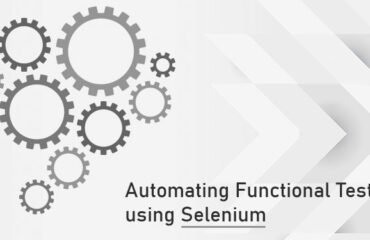Sharepoint On-Premise To Sharepoint Online Migration

Businesses are likely to seek income before investing in any new technologies or services. As for the Cloud and its services, its services and packages provide massive benefits. With the introduction of Office 365, Microsoft made a change to its service offering. Office 365 is an all-inclusive set of functionality necessary in one tool for business-centered users – in which the time spent on these processes is simplified and increased. Almost all of the important features are protected in the new update, from scheduler, mail, and planer to power apps.
SharePoint is unquestionably never behind when it comes to incorporating new features and functionality. Bureau 365 has built an online feature in SharePoint in its latest updates that enable organizational access to the SharePoint site from anywhere without any hardware or software barriers.

With 99.99% guaranteed website uptime, improved usability with improved mobile experience, and improved security/compliance benefits, the online solution has a proven track record of exceptionally good performance. Perks are not here, there are even more of these programs. Though there are additional costs to buy license/subscription plans per user, it nullifies manpower hardware and maintenance costs with high safety for upgrades to the Microsoft solution. This latest update provides error fixing and continuous support for all apps.
SharePoint Migration’s Logical Phases
Migration is not starting on its own in Sharepoint. To integrate SharePoint services, developers at SharePoint must study on-site websites and the ecosystem in detail. Fundamentals should be discussed in greater detail, and SharePoint migration cycles should be started concerning processes like the migration of sites and subsites, migration of contents with personalized functionality, licensing/unlicensed of third-party software, etc.
Initial meetings are usually covered up by SharePoint consultants. The internal SharePoint Migration Development for SharePoint 2016 is not compulsory and the direct migration of each SharePoint edition to Office 365 can be reached for SPS 2003/MOSS 2007/ SharePoint 2010/SharePoint 2014. Let us explain briefly any logical step in migration solutions.

1. ANALYSIS
The assessment of websites includes the transfer of vast web content utilizing customization, branding, user-mapping, permits, other complications, and dependencies in the on-site creation of SharePoint compared to the online environment of SharePoint. SharePoint Consultants analyze the migration scope at the initial stage and prepare a document based on this review with the main points in the migration process. This migration process is further converted into the pilot and actual migration in two parts, depending on the customer requirements.
2. PLANNING
Strategies for actual migration are described at this point. Sites that need to be migrated, removed, and archived are categorized in the Analysis Process according to key documents. Decides Timetable and throughput migration, SharePoint Sites downtime, and customer needs-based third-party tools. Migration features are developed following the targeted subscription plan Office 365.
3. MIGRATION
For migrating content, pages, and blogs, we use resources as well as other instruments, including ShareGate, Metalogix, Metavis, AvePoint, and many more. The on-site website has been changed to read-only mode for a certain time for exact data migration. To be assured from the online platform, each site or subsite being emigrated must also be checked to the same extent as the site.
4. CUSTOMIZATION
The code needs to be customized and made consistent with the current version if all the features are to continue or if new functions are to be added. During this process, the depreciated features are modified and newly migrated applications are upgraded and branded with the same demands. Integration of third parties such as News Stream, Social Media Integration, and others in this process is also implemented seamlessly.
5. VALIDATION
Any migrated and personalized documentation elements generated in an analysis process are validated w.r.t. SharePoint Consultants specifically verifies the application navigation and search features to ensure the intended outcomes of the new SharePoint Online environment are presented. The migrated solution is considered to be for production implementation with the following user approval requirements validation.
6. POST MIGRATION
Following validation and verification of migrated applications, the final release process and the previous phases are in the final phase. Post Migration removes the metadata details on the production servers and cleanses the test data with deployment scripts. Then SharePoint is deployed. The migrated solution is considered to be used for the output with subsequent confirmation of User Acceptance requirements, such as contents by site owners to ensure a smooth transition.
In the creation of SharePoint, migration, adaptation, and validation are reversible steps according to requirements. The key part – any error that leads to reproduction – is an initial review of SharePoint migration consultation. The best SPDC company in industries with extensive experience in migration projects is therefore recommended.
SharePoint Hybrid
You’re not shocked to learn that Sharepoint often acts with Hybrid when switching from the on-site to the cloud portal. That’s so, then. If sensitive and protected information needs to be kept secure, an enterprise can easily choose a SharePoint Hybrid approach where developers can store confidential data on-premise while other Collaboration data is stored in Cloud. In particular, SharePoint Hybrid is an online shuffle of the SharePoint 2013/2016.
Conclusion
Businesses are on the way to sharing and migrating resources in their current business environment. Sharepoint development services will provide companies with so many things, such as increased efficiency and agility in all their business processes and workflows. The production of SharePoint is not confined to one sector and has spanned different fields and businesses. While the company worldwide utilizes SharePoint’s software, why not accelerate its productivity cycle?




